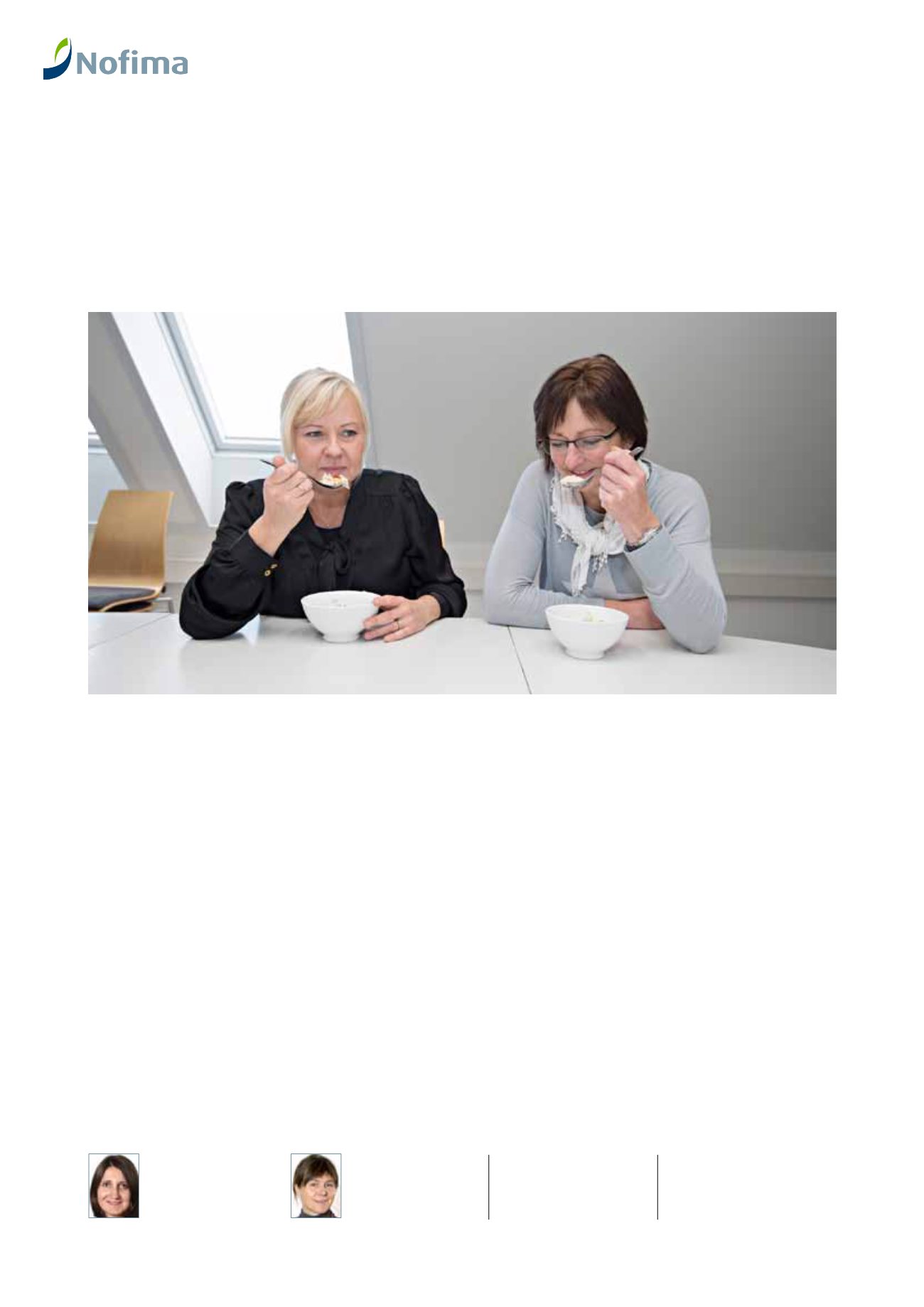
Creating value
2013
nofima.no
30
Financed by:
The Foundation for Research
Levy on Agricultural Products
Neither the sensory assessors, represented here by Vicky Berg and Kristin Enger, nor the consumers ate breakfast before the porridge at 8am.
photo: Jon-Are Berg-Jacobsen © nofima
Nofima’s sensory assessors are renowned for their well
developed senses and, as a panel, are an objective
measuring instrument. The assessors normally assess
the smell, colour and appearance of products, but they
are now assessing satiety – the sensation of feeling full –
in an objective manner.
“We wanted to see whether it’s possible to use the
sensory assessors to measure satiety and compared
their results with the perceptions of ordinary consum-
ers,” says Research Scientist Valérie Lengard Almli.
Four different porridge mixtures were tested, each
with 53 g cereal per portion. These were oat porridge
based on flakes, oat porridge based on finely ground
grain (flour), wheat porridge based on flakes and wheat
porridge based on sifted flour.
Objective measurements of satiety:
Before they
started the tests, the scientists assumed that oat por-
ridge was more filling than wheat porridge, that flakes
were more filling than flour and that the sensory panel
was better at measuring fullness than consumers.
Some of these assumptions proved to be correct, but
not all. The sensory panel is better than the consumers
at measuring and differentiating satiety into several
sensations. As such, the assessors may be used as an
objective measuring instrument of satiety. While the
ordinary consumers did not manage to detect satiety
differences between the various porridges, the sensory
panel had a clear verdict.
When it comes to flakes versus flour and oats versus
wheat, the picture is more nuanced. Right after the
porridge breakfast, the assessors feel fuller from the
porridges based on wheat flakes and oat flour, but as
time passes the feeling evens out between the four por-
ridges. Overall, for a period of 3.5 hours, wheat flake and
oat flour porridges provide the least feeling of hunger,
closely followed by oat flake porridge with wheat flour
porridge last.
This study forms part of the strategic programmes
“Sensory strategies and consumer insight for healthy and
palatable food” and “Dietary fibre and glycaemic carbo-
hydrates” as well as the competence project “Oats in the
prevention of metabolic syndrome”.
Using sensory assessors, scientists have found it possible to measure
satiety objectively. They tested porridge made of oats or wheat.
Which food fills you up?


